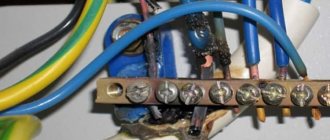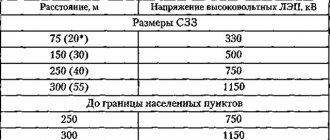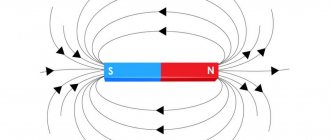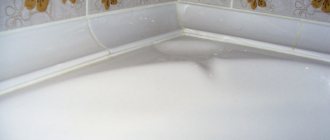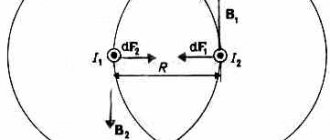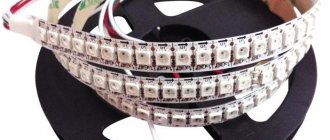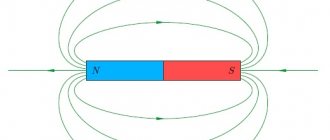Let's talk in a few words about what a neodymium magnet is and where it is used.
The magnetic properties of neodymium were discovered relatively recently, and the first products made from it appeared only in 1982. Despite this, she immediately began to gain popularity. The reason is the amazing characteristics of the alloy, capable of attracting iron objects hundreds of times its own weight and tens of times stronger than ferromagnetic devices. Thanks to this, equipment using neodymium magnets has become smaller in size, but at the same time much more efficient.
The alloy contains, in addition to neodymium, iron and boron. To obtain the desired product, these substances in powder form are not melted, but sintered, which leads to one significant drawback - fragility. A layer of copper-nickel alloy helps to get rid of chips and corrosion, thanks to which the product is ready for full use.
Marking of neodymium magnets:
Neodymium magnets have a marking that indicates the class to which the magnet belongs according to certain properties. Magnets of different shapes and purposes can be viewed on the website https://rosmagnit.ru/. The main difference between them is the permissible operating temperature , after increasing which the magnet will begin to lose its properties (indicated by a letter), and magnetic energy , measured in kiloJoules per cubic meter (indicated by a numerical index, in which the larger the number, the more force must be applied to its separation from the surface).
Letters used for marking according to permissible operating temperature:
- N (Normal) – up to +80 °C,
- M (Medium) – up to +100 °C,
- H (High) – up to +120 °C,
- SH (Super High) – up to +150 °C,
- UH (Ultra High) – up to +180 °C,
- EH (Extra High) – up to +200 °C.
Search and collection of metal objects
Now you will not have problems finding iron objects that have rolled under furniture or fallen into a well. Simply attach, for example, a magnetic disk to the end of a stick or tie it to a cord and move this simple device over the place where the object is likely to fall. In just a few minutes, what you lost will be in your hands safe and sound.
The use of a neodymium magnet will also help to collect metal shavings or scattered screws. For convenience, wrap the neodymium item in a cloth, sock or plastic bag. This will help, on the one hand, to protect the work surface from the adhesion of iron debris, and on the other hand, to remove everything that is stuck at once and not separate each screw separately.
Neodymium magnet, marking, manufacturing, application.
A neodymium magnet is a product with high magnetic properties, which contains the chemical elements: neodymium, boron and iron. An alloy of such elements has a tetragonal crystal structure, which is denoted by the formula: Nd2Fe14B.
Compared to a conventional permanent magnet, neodymium has an increased attractive force, and also has a longer demagnetization period (losses range from approximately 0.1% to 2% of magnetization over 10 years).
Neodymium magnets can differ in size, shape (ball, cube, disk, ring, rod, etc.), magnetic strength and permissible operating temperatures.
Neodymium and its applications
Marking of neodymium magnets
Manufacturing of neodymium magnets
Application of neodymium magnets
Holders
Talking about the areas where neodymium magnets are used in everyday life, we will mention various types of fasteners. With their help, you can hang any iron-containing objects on vertical surfaces: kitchen or plumbing utensils, gardening and any other tools. Simply mount the neodymium plates on the stand in a certain order and, if necessary, attach to them, for example, knives or screwdrivers.
The use of a neodymium magnet in everyday life is also possible for hanging non-iron objects: paintings, mirrors, shelves, mosquito nets, etc. To do this, fix a magnetic plate on the item, and a small sheet of iron on the surface where you plan to attach it.
As we have already said, the neodymium alloy is quite fragile, so it is undesirable to violate its integrity by drilling or cutting, as a result of which the properties of the metal will be significantly affected. It is better to choose neodymium magnets as suspensions, the use of which does not require additional processing. Fortunately, online stores offer products of a wide variety of configurations with holes of the required diameter, with various fasteners and cutouts. Therefore, you can easily select the device of the desired configuration. You can just as successfully use magnetic elements as a latch on a door, to attach a badge, or to create your own refrigerator magnet. This is not a complete list of areas where neodymium magnets are used.
Characteristics of neodymium magnets
Earlier in the article Properties of neodymium magnets, the question was addressed - which magnet is right for you and the main properties of neodymium magnets were considered. In this article we will look at the main characteristics of neodymium magnets in more detail, and also talk about how to compare the strength of magnets.
Let's see what the main characteristics of neodymium magnets consist of:
- Residual magnetic induction is the magnetization that remains after magnetization of the material from which our magnet is made, measured on its surface, in a closed system.
- Coercive force is the value of the magnetic field strength required to completely demagnetize the substance from which the magnet is made. The SI unit of measurement is Ampere/meter. The greater the coercive force a magnet has, the more resistant it is to demagnetizing factors.
- Magnetic energy - this parameter determines the main characteristic of a Neodymium magnet. Very often, this quantity is called “magnetic strength”
For ease of understanding, we have summarized all the data in a table. We presented all numerical values in two units of measurement. The first, without brackets, is the measurement value in the SI system (this system is adopted in Russia), and the second (in brackets) is the measurement unit in the international CGSE system (European standards). For greater convenience, we decided to indicate both values in the table.
Table - main properties and characteristics of neodymium magnets:
| Magnet class | Residual magnetic induction, milliTesla (KiloGauss) | Coercive force, KiloAmpere/meter (KiloOersted) | Magnetic energy, kiloJoule/m3 (MegaGauss-Oersted) | Operating temperature, degrees Celsius |
| N35 | 1170-1220 (11,7-12,2) | ≥955 (≥12) | 263-287 (33-36) | 80 |
| N38 | 1220-1250 (12,2-12,5) | ≥955 (≥12) | 287-310 (36-39) | 80 |
| N40 | 1250-1280 (12,5-12,8) | ≥955 (≥12) | 302-326 (38-41) | 80 |
| N42 | 1280-1320 (12,8-13,2) | ≥955 (≥12) | 318-342 (40-43) | 80 |
| N45 | 1320-1380 (13,2-13,8) | ≥955 (≥12) | 342-366 (43-46) | 80 |
| N48 | 1380-1420 (13,8-14,2) | ≥876 (≥12) | 366-390 (46-49) | 80 |
| N50 | 1400-1450 (14,0-14,5) | ≥876 (≥11) | 382-406 (48-51) | 80 |
| N52 | 1430-1480 (14,3-14,8) | ≥876 (≥11) | 398-422 (50-53) | 80 |
| 33M | 1130-1170 (11,3-11,7) | ≥1114 (≥14) | 247-263 (31-33) | 100 |
| 35M | 1170-1220 (11,7-12,2) | ≥1114 (≥14) | 263-287 (33-36) | 100 |
| 38M | 1220-1250 (12,2-12,5) | ≥1114 (≥14) | 287-310 (36-39) | 100 |
| 40M | 1250-1280 (12,5-12,8) | ≥1114 (≥14) | 302-326 (38-41) | 100 |
| 42M | 1280-1320 (12,8-13,2) | ≥1114 (≥14) | 318-342 (40-43) | 100 |
| 45M | 1320-1380 (13,2-13,8) | ≥1114 (≥14) | 342-366 (43-46) | 100 |
| 48M | 1380-1420 (13,8-14,3) | ≥1114 (≥14) | 366-390 (46-49) | 100 |
| 50M | 1400-1450 (14,0-14,5) | ≥1114 (≥14) | 382-406 (48-51) | 100 |
| 30H | 1080-1130 (10,8-11,3) | ≥1353 (≥17) | 223-247 (28-31) | 120 |
| 33H | 1130-1170 (11,3-11,7) | ≥1353 (≥17) | 247-271 (31-34) | 120 |
| 35H | 1170-1220 (11,7-12,2) | ≥1353 (≥17) | 263-287 (33-36) | 120 |
| 38H | 1220-1250 (12,2-12,5) | ≥1353 (≥17) | 287-310 (36-39) | 120 |
| 40H | 1250-1280 (12,5-12,8) | ≥1353 (≥17) | 302-326 (38-41) | 120 |
| 42H | 1280-1320 (12,8-13,2) | ≥1353 (≥17) | 318-342 (40-43) | 120 |
| 45H | 1320-1380 (13,2-13,8) | ≥1353 (≥17) | 326-358 (43-46) | 120 |
| 48H | 1380-1420 (13,8-14,3) | ≥1353 (≥17) | 366-390 (46-49) | 120 |
| 30SH | 1080-1130 (10,8-11,3) | ≥1592 (≥20) | 233-247 (28-31) | 150 |
| 33SH | 1130-1170 (11,3-11,7) | ≥1592 (≥20) | 247-271 (31-34) | 150 |
| 35SH | 1170-1220 (11,7-12,2) | ≥1592 (≥20) | 263-287 (33-36) | 150 |
| 38SH | 1220-1250 (12,2-12,5) | ≥1592 (≥20) | 287-310 (36-39) | 150 |
| 40SH | 1240-1280 (12,4-12,8) | ≥1592 (≥20) | 302-326 (38-41) | 150 |
| 42SH | 1280-1320 (12,8-13,2) | ≥1592 (≥20) | 318-342 (40-43) | 150 |
| 45SH | 1320-1380 (13,2-13,8) | ≥1592 (≥20) | 342-366 (43-46) | 150 |
| 28UH | 1020-1080 (10,2-10,8) | ≥1990 (≥25) | 207-231 (26-29) | 180 |
| 30UH | 1080-1130 (10,8-11,3) | ≥1990 (≥25) | 223-247 (28-31) | 180 |
| 33UH | 1130-1170 (11,3-11,7) | ≥1990 (≥25) | 247-271 (31-34) | 180 |
| 35UH | 1180-1220 (11,7-12,2) | ≥1990 (≥25) | 263-287 (33-36) | 180 |
| 38UH | 1220-1250 (12,2-12,5) | ≥1990 (≥25) | 287-310 (36-39) | 180 |
| 40UH | 1240-1280 (12,4-12,8) | ≥1990 (≥25) | 302-326 (38-41) | 180 |
| 28EH | 1040-1090 (10,4-10,9) | ≥2388 (≥30) | 207-231 (26-29) | 200 |
| 30EH | 1080-1130 (10,8-11,3) | ≥2388 (≥30) | 233-247 (28-31) | 200 |
| 33EH | 1130-1170 (11,3-11,7) | ≥2388 (≥30) | 247-271 (31-34) | 200 |
| 35EH | 1170-1220 (11,7-12,2) | ≥2388 (≥30) | 263-287 (33-36) | 200 |
| 38EH | 1220-1250 (12,2-12,5) | ≥2388 (≥30) | 287-310 (36-39) | 200 |
And finally we come to the question that our clients often ask - how to compare the strength of magnets? In order not to bore the reader with the abundance of information in one material, we decided to devote a separate article to this topic, in which we will fully discuss this issue.
Clamps
If you need to glue two surfaces, but due to the complexity of the shape it is not possible to use a vice, magnetic parts will again help solve the problem. Simply place the objects to be glued between them, which, due to the attractive force of neodymium, will be tightly pressed to each other.
Using this kind of clamps, you can easily clean or wash surfaces that seemed completely inaccessible. Where are neodymium magnets used specifically? For washing the external surfaces of balcony glass, cleaning an aquarium and other hard-to-reach glass containers. Place the magnetic bar inside the washcloth, which you secure on the outside of the balcony, holding it with another magnet from the inside. This way, you can direct the external sponge wherever you want and clean the glass perfectly.
Auto
You can get rid of chips and other metal debris in engine oil by using a neodymium magnet; there is a video about this on the Internet. Attach a magnetic device to the crankcase drain plug, neodymium will attract iron microparticles, and they will not get into the working mechanisms of the car.
With the help of a small neodymium plate, you can also secure any objects to the car body, and with the help of large magnetic disks or bars you can even even out small dents.
Creating a magnetic fastener
What else is a neodymium magnet used for? It can be used to create magnetic fasteners that can be used to secure various objects. It is in this way that you can attach any advertising material to a bus or trolleybus by attaching magnetic fasteners to it. In this case, one can observe that there is no need to drill the sides of the same bus to secure the banner. This technique is used to install advertising banners between buildings and lamp posts. Where a neodymium magnet is used, there is no need to violate the integrity of metal structures.
Neodymium magnet - use in everyday life. Unexplored Moments
Many scientists believe that electromagnetic waves have beneficial effects on living organisms. In this regard, many devices have appeared that are believed to promote plant growth and improve the health of the body. Many gardeners stick magnetic rods near their plants, and livestock farmers place objects in cages with pets. In addition, various magnetic bracelets, neodymium finishing of clothing, water purification and much more are now popular.
Of course, in the article we touched upon only a small fraction of the areas where neodymium magnets are used; videos and articles with other ways to use these products can be found on the Internet.
